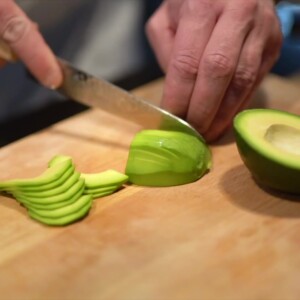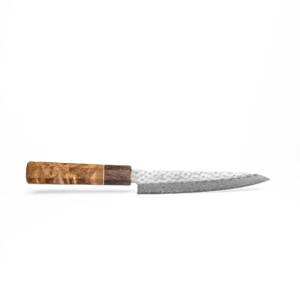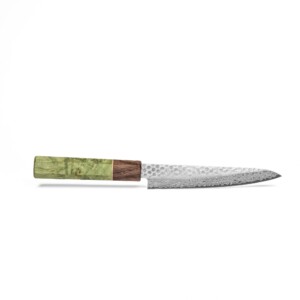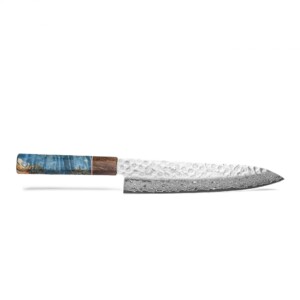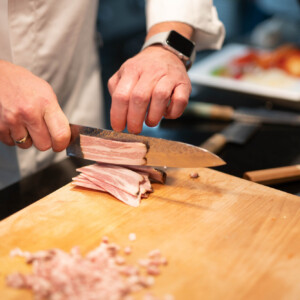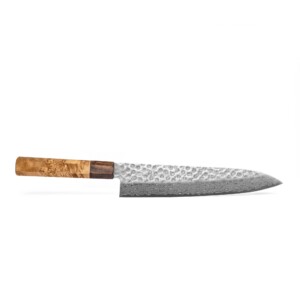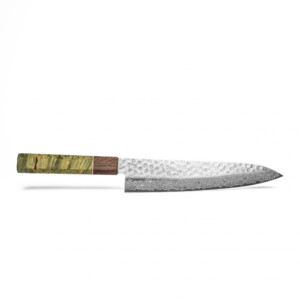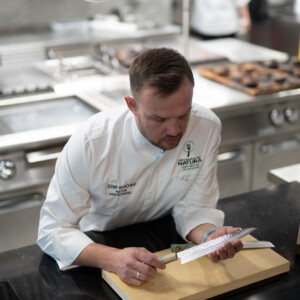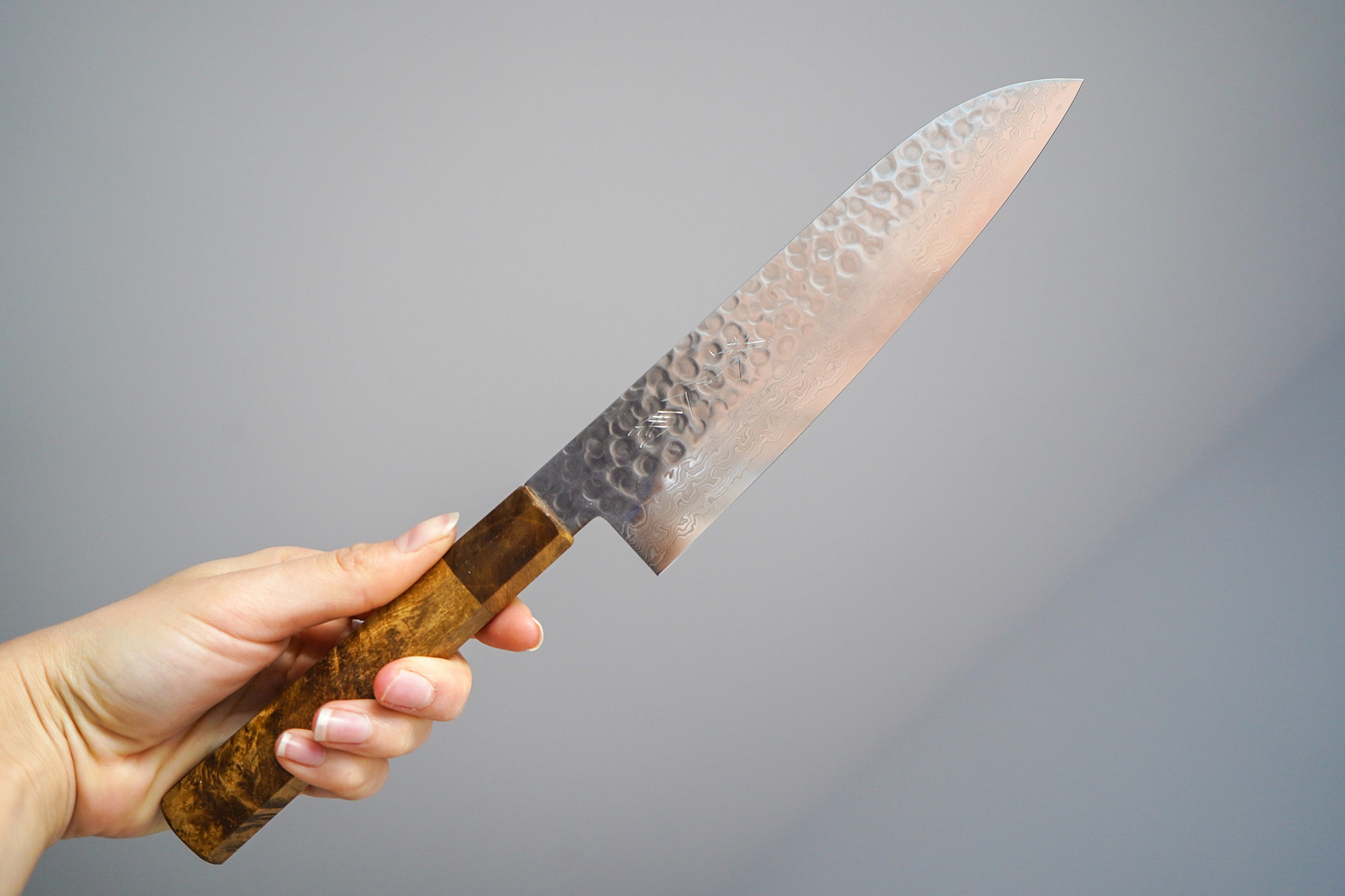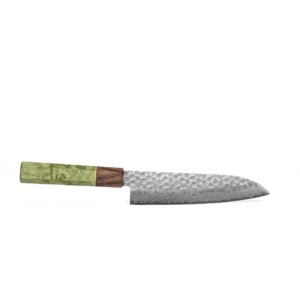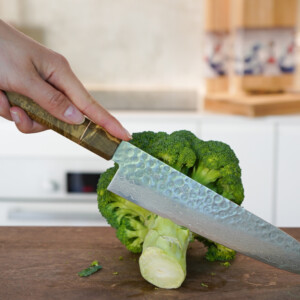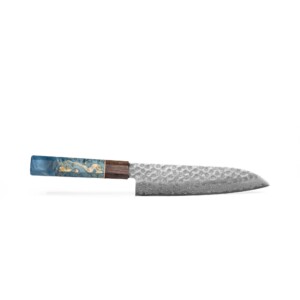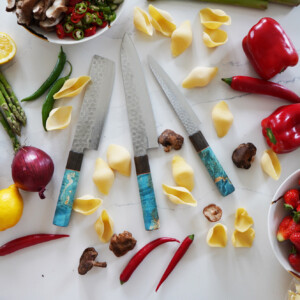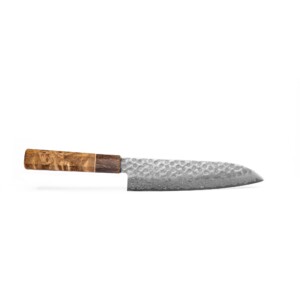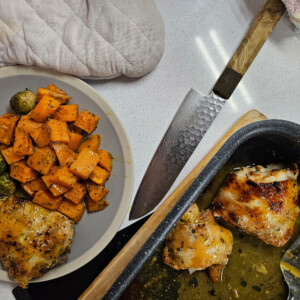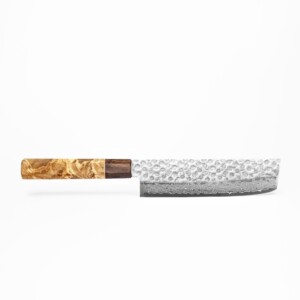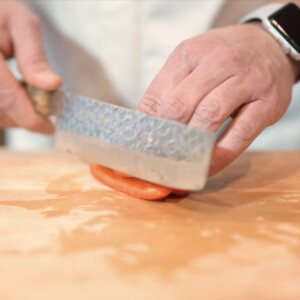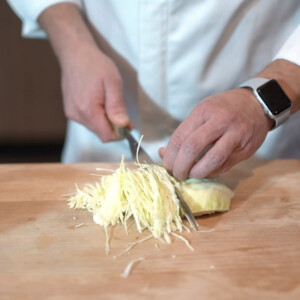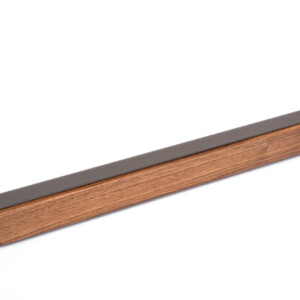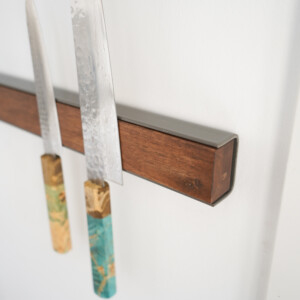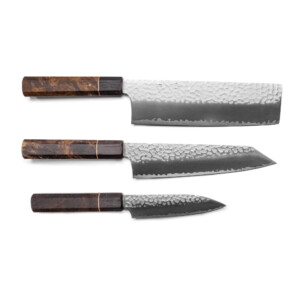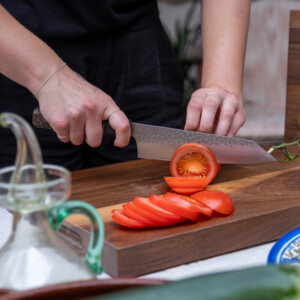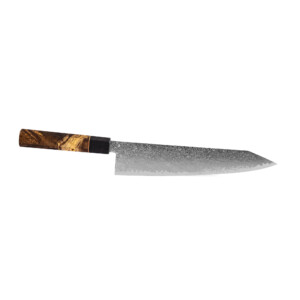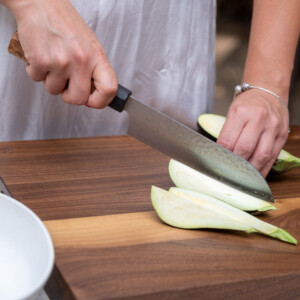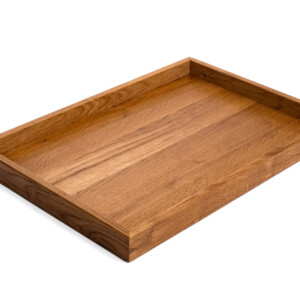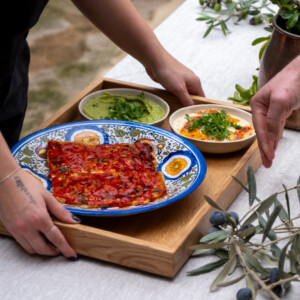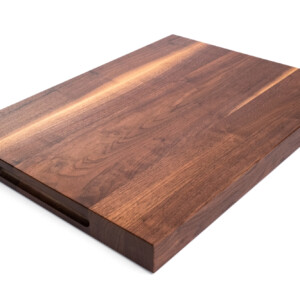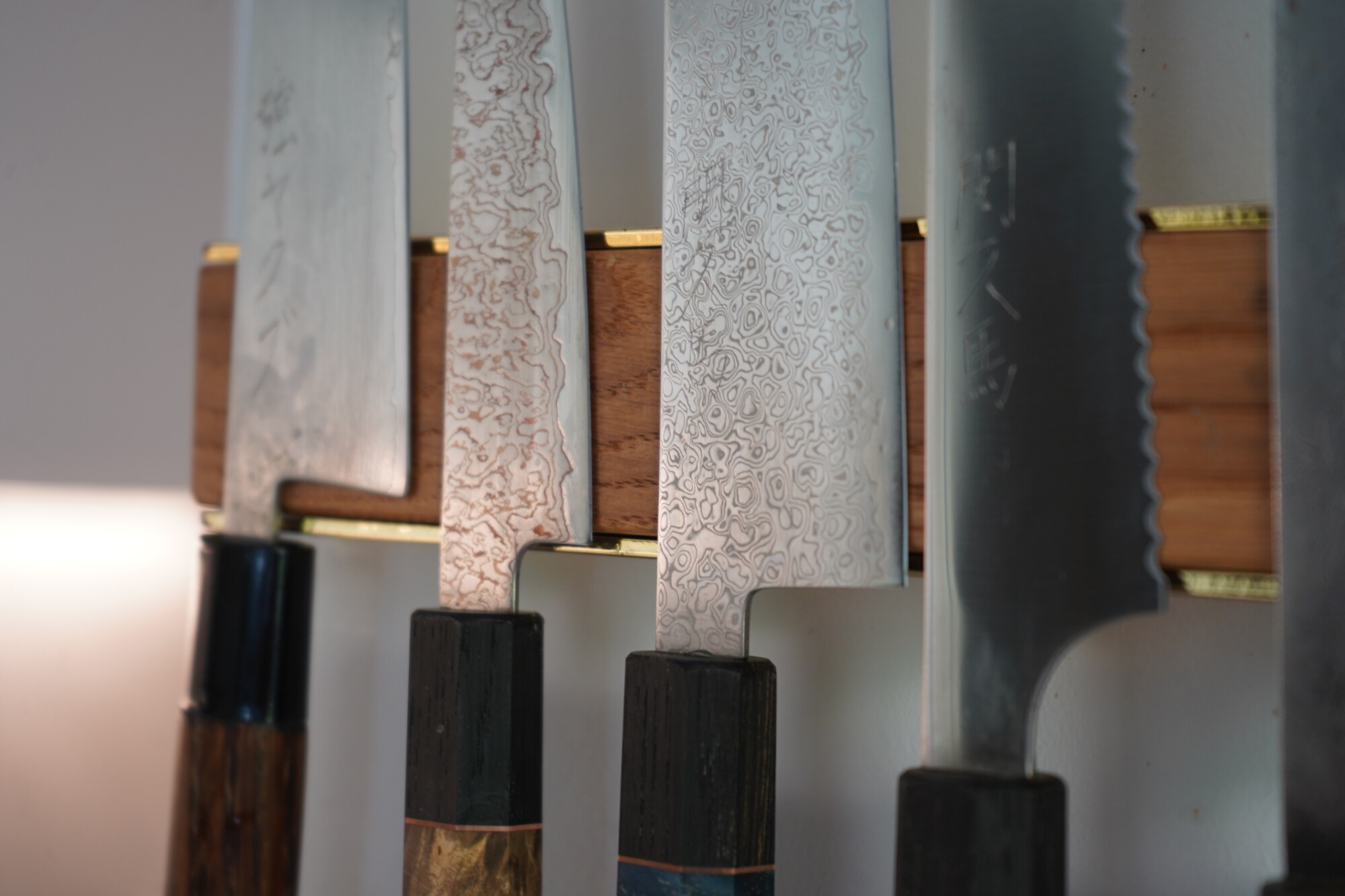When it comes to selecting a perfect Japanese knife for women, the truth is, there isn’t a specific Japanese knife type for women. The beauty of these knives is the fact that they can be used by everyone. What determines which type of knife is good for you is the size of your hands and tasks you want to perform with the knife.
Naturally, women have smaller hands than men. So a 6’5 ft cook will aim for a knife handle with wider grip and larger blade length than a 5’4 ft woman.
I’m 5’7 ft (Kamilla here, hi) so I will share with you what works for me. For guidance, I’ve taken some photos of me holding different types of knives. This way, you will be able to see how each type of knife fits in.
Small is beautiful
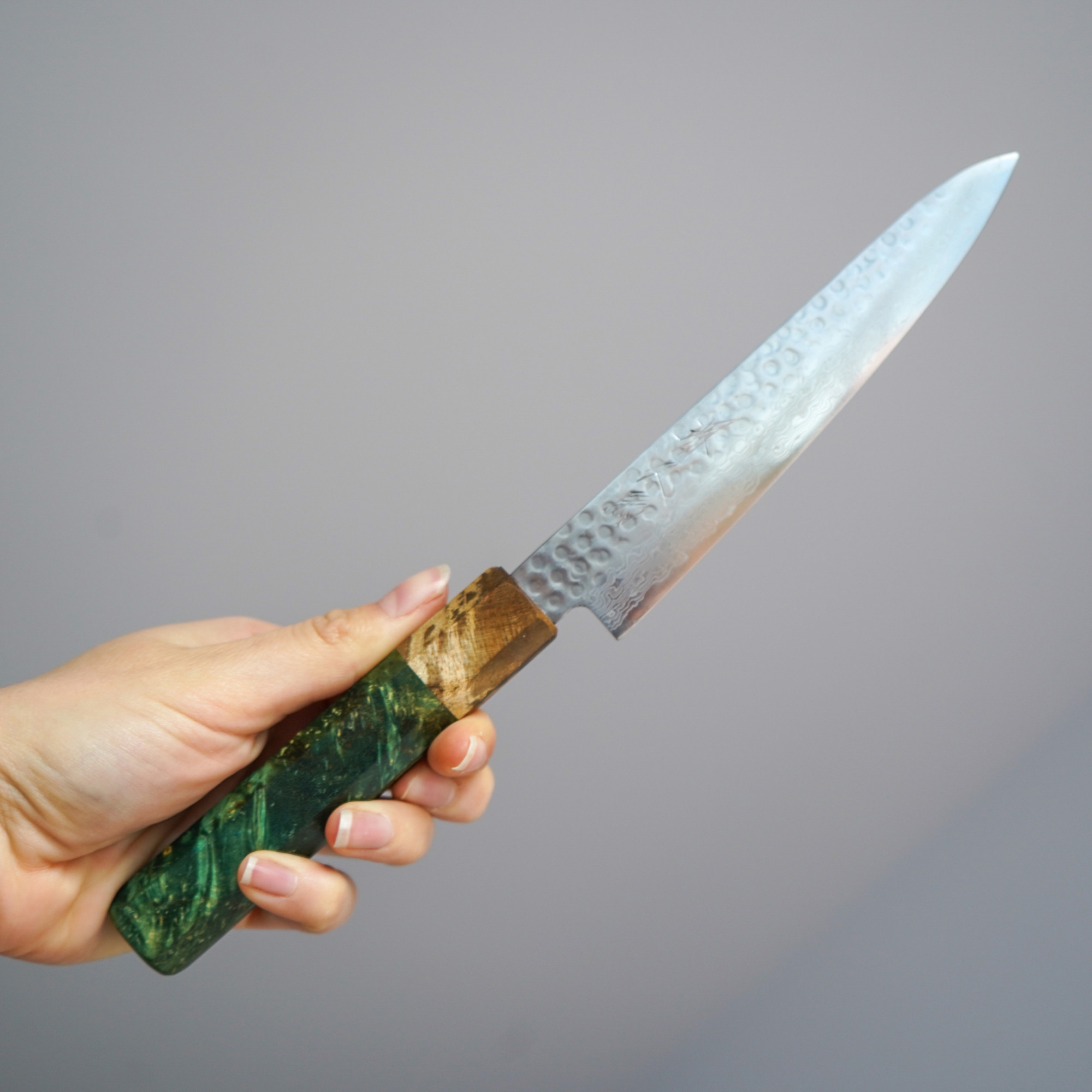
A Petty knife is a smaller general-purpose knife that’s used for a variety of kitchen tasks – and it’s so versatile. It will quickly become your go-to choice for daily tasks. Deft, with a thin, agile blade, their compact size makes them wonderfully nimble and easy to manoeuvre. This agility makes them useful for carving, mincing, peeling, and slicing a variety of fruits, herbs, and vegetables and for delicate tasks such as creating an intricate garnish.
You want a relatively straight blade with a thin tip, but that has the ability to rock back and forth a bit for dicing and mincing veggies like shallots and garlic. Petty knives are usually between 150mm and 170mm long. I prefer a 150mm blade with a 120mm handle as I can easily manoeuvre with such a knife.
Building a core knife arsenal
If you want a sturdy knife that can do everything from breaking down meat or fish to chopping vegetables, go for a chef’s knife (Gyūtō). Ideally the perfect Gyuto knife for women is one with a shorter blade of 190mm to 210mm.
When we were designing our Sakai Kyuba Knife Set I was testing many different knife sizes and steels. I’m 5’7 ft and I find 210mm Gyuto (chef’s knife) with a 130mm octagonal handle to be ideal for me.

If you prefer an even lighter and thinner knife than a Gyuto, a Santoku is a great choice. Santoku can be used for meat, fish and vegetables. However, bear in mind that some Santokus have a single-bevel blade which are meant for use in your right hand only — left-handed single bevels are rare and expensive. I’m left handed and I find a double bevel knife good enough. I’ve tried some single-bevel knives but for a home cook like myself, I don’t really see the need for getting into so much customisation.
My third favourite knife is the Nakiri or vegetable-cutting knife. Characterised by its straight blade edge and squared off tips, the Nakiri knife allows you to cut all the way through to the cutting board without having to use a horizontal push or pull. Thin and light in weight, the Nakiri knife is ideal for women prepping all types of vegetables.
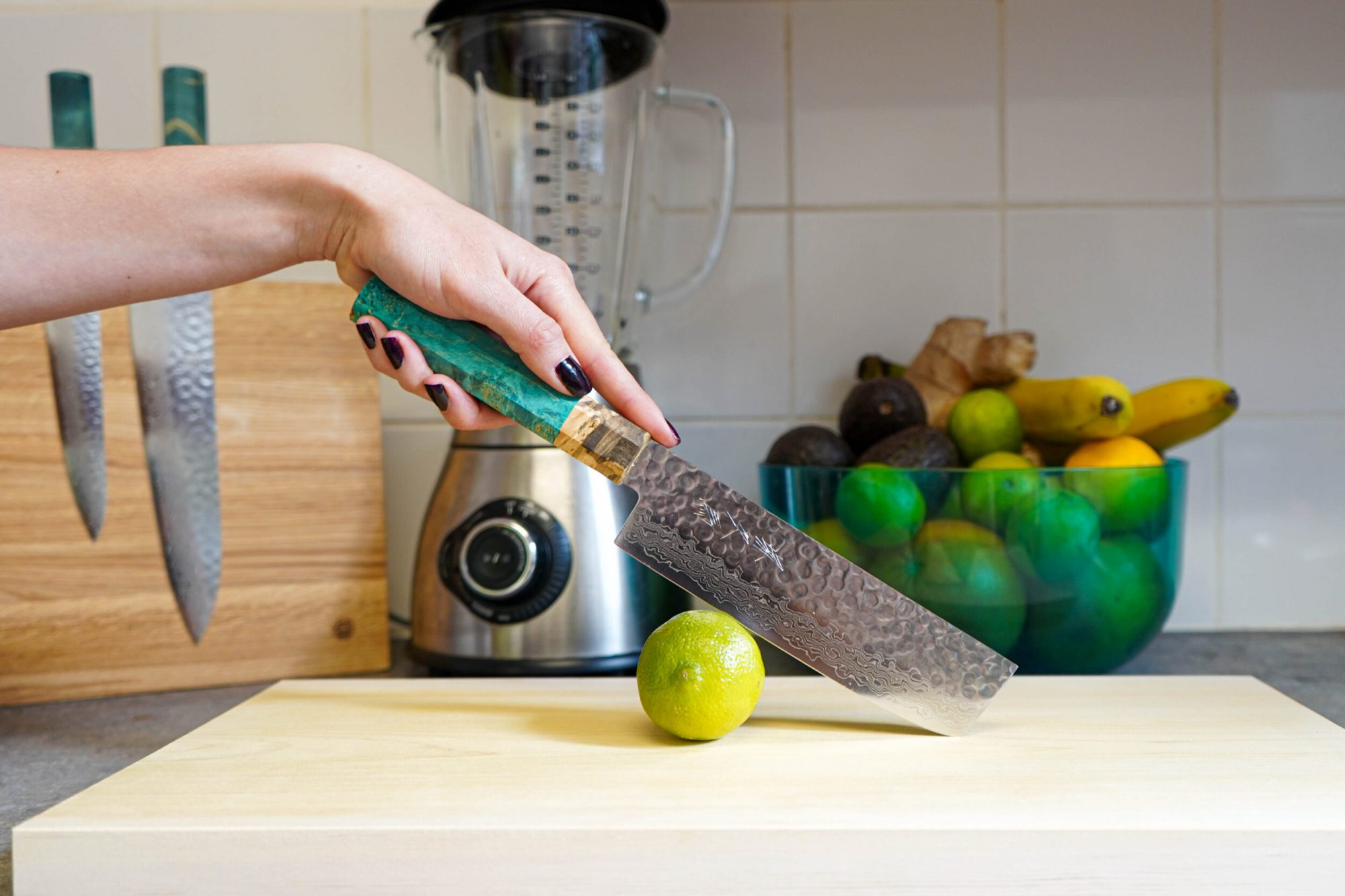
Other knives include the deba, a single-bevel pointed knife that’s used for breaking down fish and meat, and the long, thin, elegant yanagiba with which one can delicately slice fish for sashimi and sushi.
Things to know when buying Japanese knives
The majority of Japanese handmade knives are very high quality. Japanese masters train for many decades under the supervision of older blacksmiths before they are even able to make their own knives. Getting a Japanese knife guarantees that you’re buying yourself a robust, quality tool and a piece of art on its own. For more information check out our Buying Guide.
When deciding upon getting a new knife, the first thing you should ask yourself is how much time and effort you’re willing to put into taking care of your knives.There are several important aspects to knife maintenance: storage, washing, honing and sharpening, as well as using the right chopping board. Caring for your knife is absolutely vital if you want it to serve you for years.
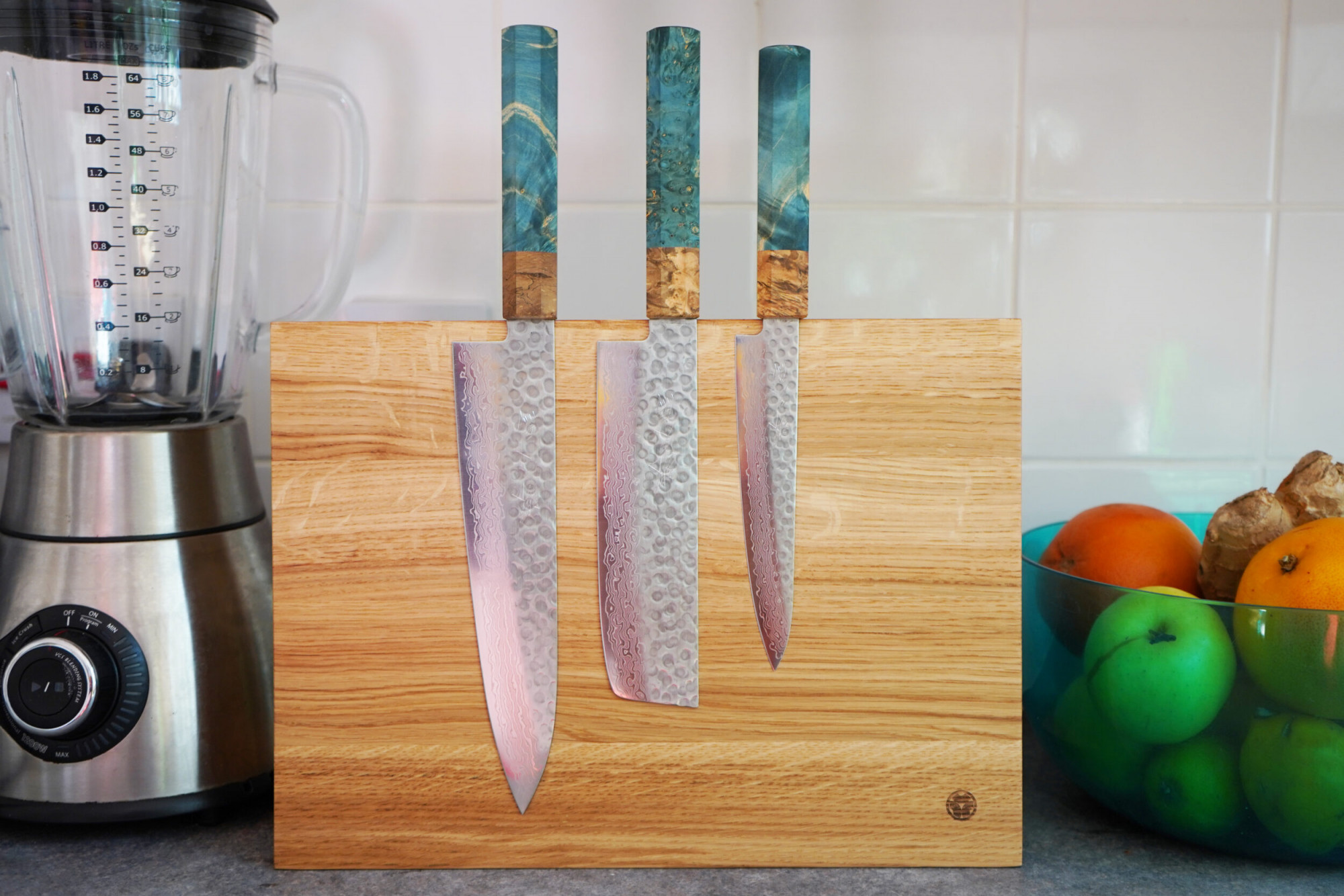
In summary
There is no such thing as the best Japanese kitchen knife for women. It’s all about the size of your hands and tasks you want to perform with such a knife. Since women have smaller hands, small, deft, and agile knives such as petty/utility ones will quickly become the first tool you grab onto for daily cutting tasks.
Petty knives are lightweight and nimble, which means they can be comfortably used for extended periods without fatigue. They’re great to quickly chop or mince produce when you don’t want to pull out your chef’s knife.
Therefore, we recommend you start with a Petty knife. We promise it will make you fall in love with Japanese knives. Once this happens, you will want to compliment your core knife arsenal with Gyuto or Santoku (chef’s knife) and Nakiri (veggie knife).
Good luck with your knife hunt!


